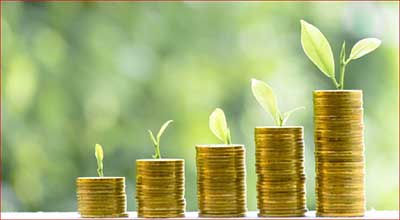Date: 15/11/2022
Relevance: GS-3: Indian Economy and issues relating to planning, mobilization, of resources, growth, development and employment.
Key Phrases: Sovereign green bonds, Organisation for Economic Co-operation and Development, Green bonds, climate friendly projects, Sustainable Development Goals.
Context:
- The Government and the RBI have decided to issue sovereign green bonds during Q4 of FY23.
Bond:
-
A bond is a fixed-income instrument that represents a loan made by an investor to a borrower (typically corporate or governmental).
-
A bond could be thought of as an (I owe you) I.O.U. between the lender and borrower that includes the details of the loan and its payments.
-
Bonds are used by companies, municipalities, states, and sovereign governments to finance projects and operations.
-
Owners of bonds are debtholders, or creditors, of the issuer.
What are Sovereign Green Bonds?
- A bond is an instrument to raise debt.
- These are financial instruments that generate proceeds for the investments in environmentally-suitable and climate friendly projects.
- These instruments have lower capital costs than regular bonds.
- When these bonds carry guarantees related to the repayment of principal and payment of interest by the sovereign or the government, they are called Sovereign Green Bonds (SGrB).
- The proceeds generated from the issuance of such bonds will be deployed in Public Sector projects which help in reducing the carbon intensity of the economy.
- As a part of the Government’s overall market borrowings in 2022-23, sovereign green bonds will be issued for mobilising resources for green infrastructure.
- A project is classified “green” on the basis of four key principles.
- These include:-
- encouraging energy efficiency in resource utilisation,
- reducing carbon emissions and greenhouse gases,
- promoting climate resilience and
- improving natural ecosystems and biodiversity, especially in accordance with SDG (Sustainable Development Goals).
Do you know?
- According to Bank for International Settlements (BIS) database, SGrB is part of Green, Social and Sustainability (GSS) bonds.
- In 2007, the European Investment Bank issued a Climate Awareness Bond, the world’s first green bond.
- The World Bank’s first green bond, in November 2008, was the first to define project eligibility and provide assurance, through a second-party opinion provider, that eligible projects would address climate change.
- The first sovereign green bonds were issued by Poland and France as recently as early 2017.
- At end-2019, the share of sovereign issuers in total outstanding GSS bonds was only 4.2 per cent, but it increased to 7.5 per cent by end-June 2022.
- BIS database reveals the amount of GSS bonds outstanding rose more than fourfold from January 2019, to $2.9 trillion at the end of June 2022.
How are they different from conventional government bonds?
- Government bonds or government securities (G-Secs) are normally
categorised into two — Treasury Bills and Dated or Long-Term Securities.
- Treasury Bills have a maturity of less than one year and they do not carry coupon rates. These are issued at a discount, while redeemed at face value.
- Dated Or Long-term securities are issued for a period above 1 year and up to 40 years.These bonds carry coupon rates and are tradable in the securities market.
- SGrB is one form of dated security. It will have a tenor and interest rate. Money raised through SGrB is part of overall government borrowing.
- SRgB may carry lower interest rate than that for regular government borrowings.
- The government and the RBI decided to borrow ₹5.92 lakh crore in H2 FY23 through dated securities, including ₹16,000 crore through issuance of SGrBs.
Significances:
- Creation of a Vibrant Ecosystem: Development of a sovereign green
benchmark could eventually lead to the creation of a vibrant ecosystem of
raising green bonds from international investors.
- Today, green bonds mainly finance projects within renewable energy, energy efficiency, low-carbon transport, sustainable water, and waste and pollution.
- Increasing Pool of Sustainable Investors: It is a viable vehicle for enabling the increasing pool of sustainable investors to access environmental projects.
- Good for Developing Economies: Investors are also interested in placing money where the environmental impact achieved is highest per unit of currency, and emerging and developing economies have the potential to offer this where lower project costs exist.
- Catalyst for further development of the domestic capital market: It can be a catalyst for further development of the domestic capital market and financial system more broadly beyond environmentally related projects.
- Help kickstart large inflows of capital: With the International Energy Agency’s (IEA) World Energy Outlook 2021, estimating that 70% of the additional USD 4 trillion spending to reach net-zero is required in emerging/developing economies, sovereign issuance can help kickstart these large inflows of capital.
Conclusion:
- Centre’s approval to the framework for sovereign green bonds will definitely solidify India’s commitment towards its Nationally Determined Contribution targets.
Note:-
- Nationally Determined Contribution targets are where countries set targets for mitigating the greenhouse gas emissions that cause climate change and for adapting to climate impacts.
- The plans define how to reach the targets, and elaborate systems to monitor and verify progress so it stays on track.
Source: The Hindu BL
Mains Question:
Q. What are sovereign green bonds? How are they different from conventional government bonds? (Words 250).







